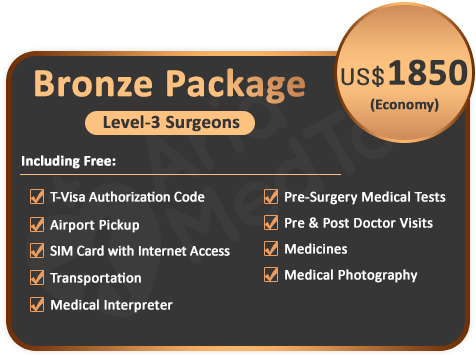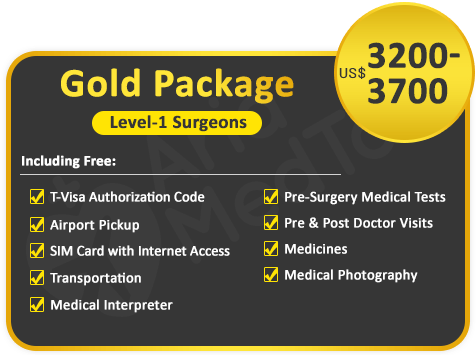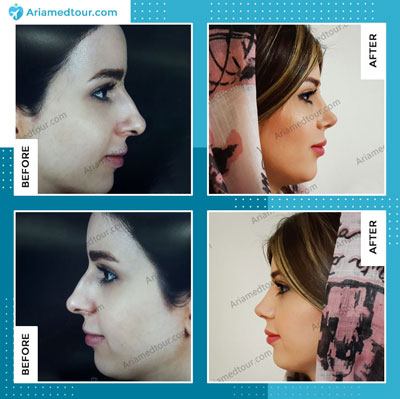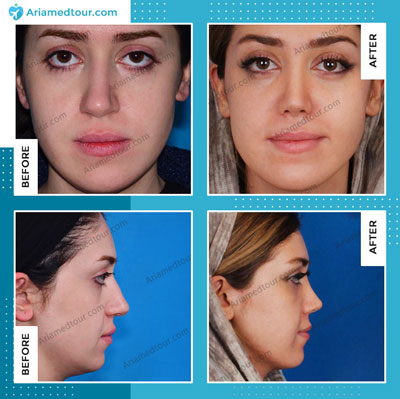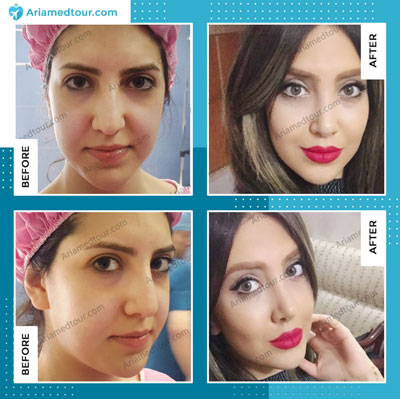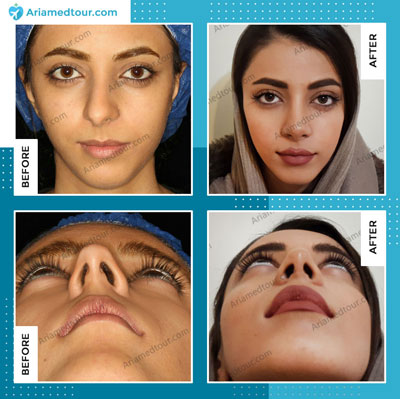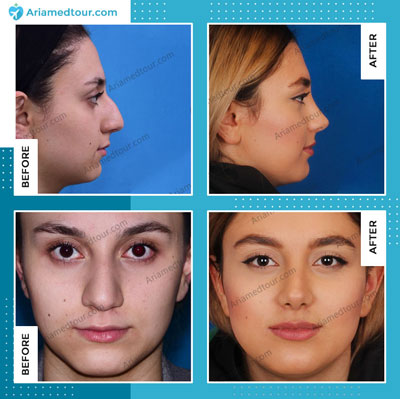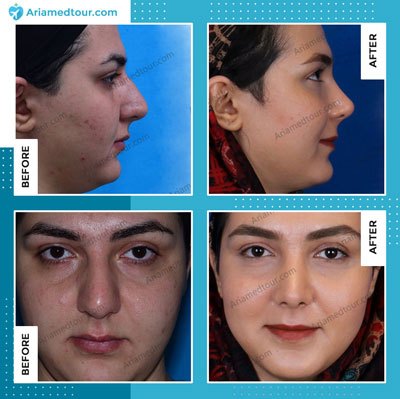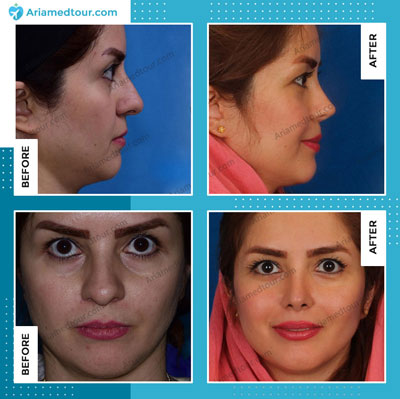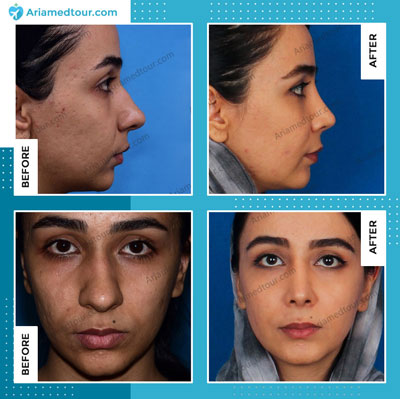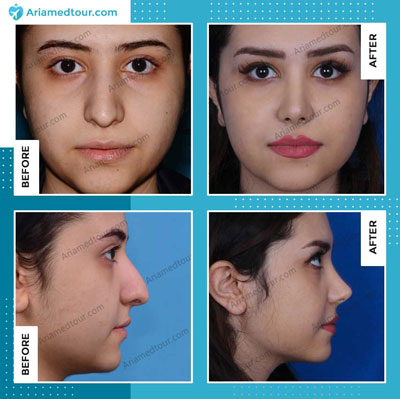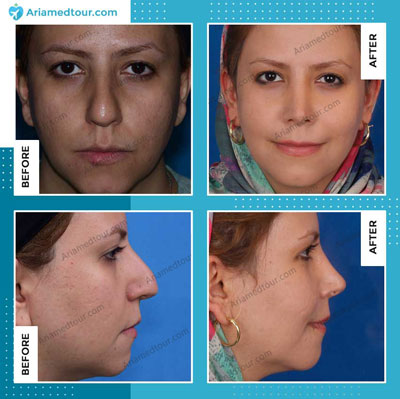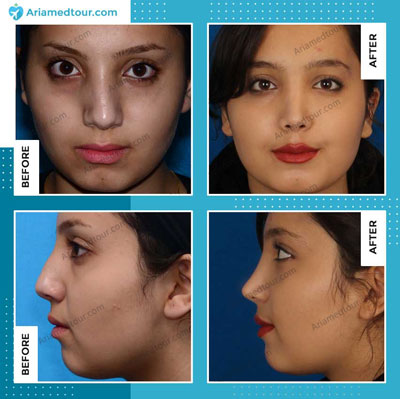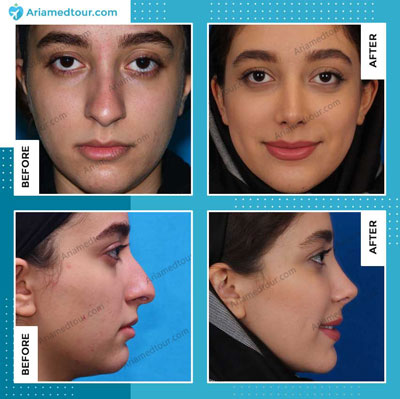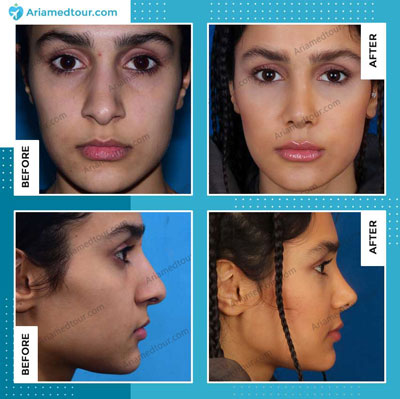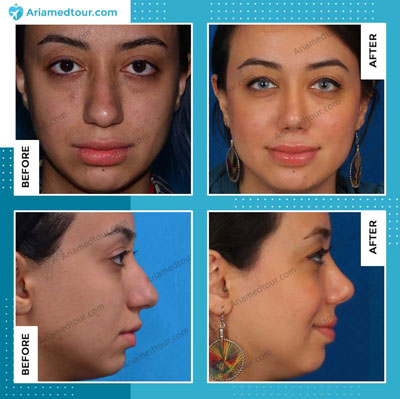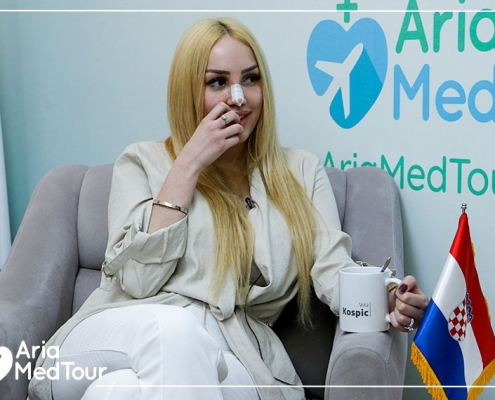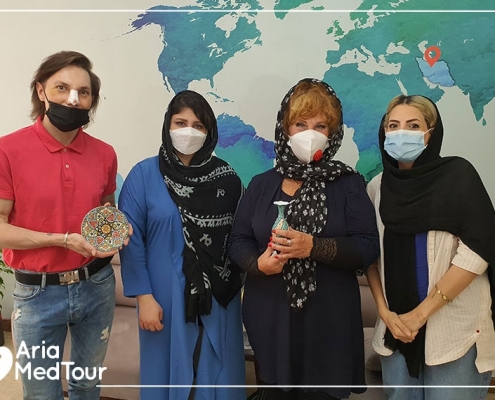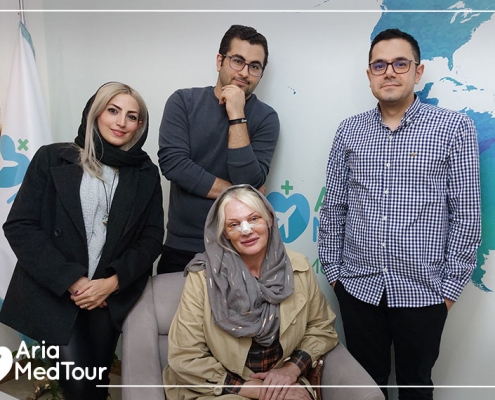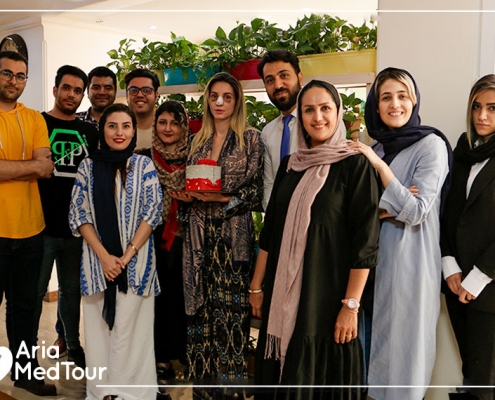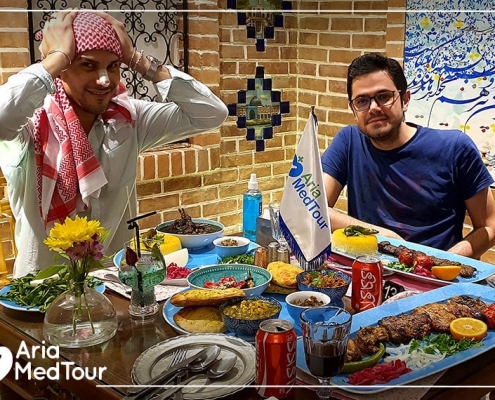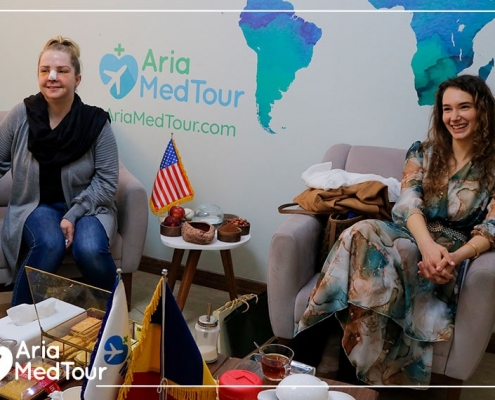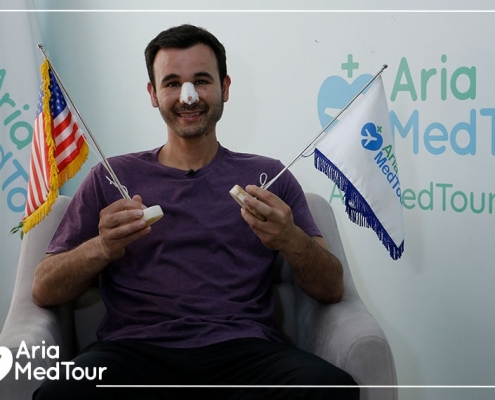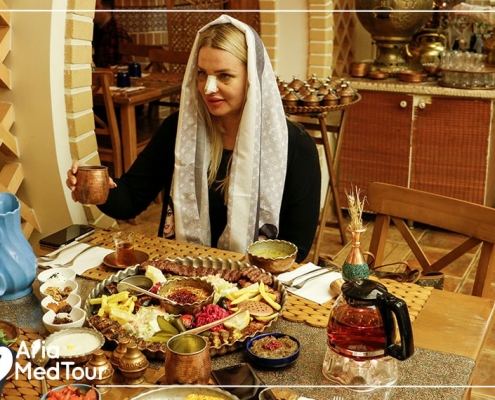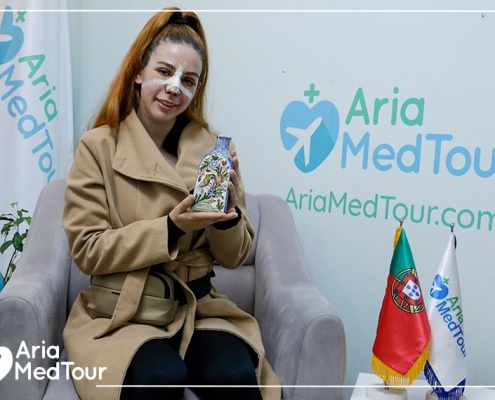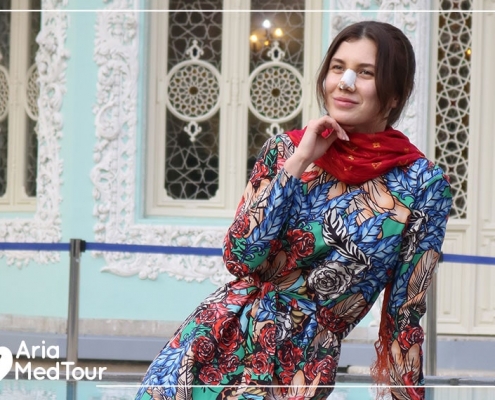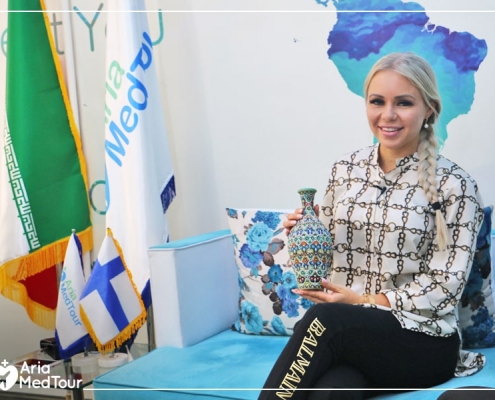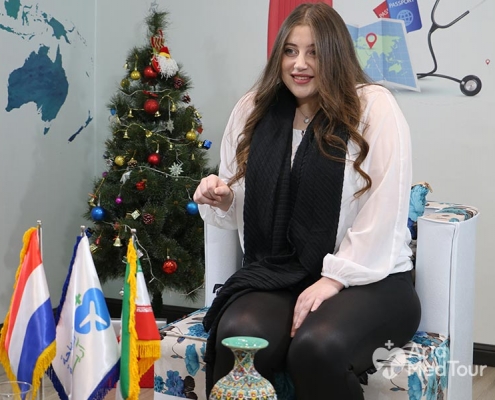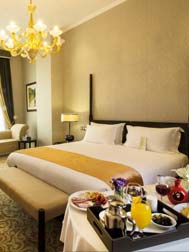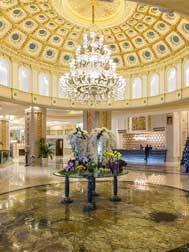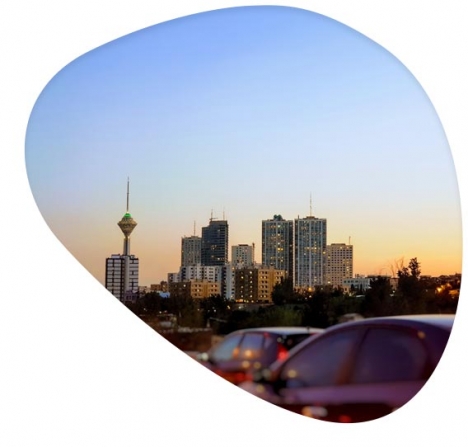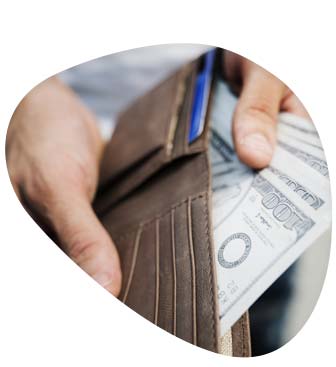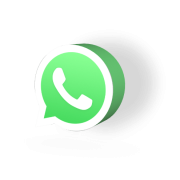Septoplasty in Iran: All you need to know
The surgery in which the nasal septum is repaired and straightened is called septoplasty. The nasal septum is the wall that divides the nasal passage into two separate cavities, right and left. The lower half of this septum is cartilaginous and the upper half is bony. Septum deviation may be due to congenital factors but will sometimes be due to impact. For most people, this septum is not exactly in the middle, but it doesn’t cause any problems. In around a third of the population, this deviation from the centerline is so great that breathing is impeded, resulting in respiratory problems. It also increases the risk of sinus infections due to poor mucus drainage. Other possible symptoms of nasal septum deviation include recurrent nosebleeds and facial pain.
After septoplasty in Iran, the flow of air and mucous fluids in your nose and consequently your quality of life will improve. Your surgeon may cut and change parts of your septum before placing it in the new position. The only treatment for a deviated septum is surgery.
What are the symptoms of a deviated septum?
The main symptom of nasal septal deviation is respiratory obstruction so that the person can not breathe easily through the nose and sometimes suffers from sleep disorders such as obstructive sleep apnea. Normally, sinus secretions drain through the ducts into the nose and from there to the back of the throat. The deviated septum may block the sinus ducts. In this case, the secretions of the sinuses accumulate inside them, and the possibility of sinusitis increases.
Deviation of the nasal septum can also cause snoring, decreased sense of smell, and headaches, as well as dryness of parts of the nose. This dryness can also lead to nosebleeds.
When is a septoplasty performed?
A septoplasty is performed for:
- Chronically impaired nasal breathing
- Nasal mucous membrane overgrowth
- Cosmetically to correct a crooked nose
- Impaired ventilation of the paranasal sinuses
- Nasal bone fracture
What should we do before septoplasty?
In most cases, septoplasty is performed on an outpatient basis in surgical centers or hospitals. An anesthesiologist will examine your condition before surgery and monitor your symptoms during surgery. If your doctor has ordered tests, you should bring the results with you on the day of surgery for the surgeon and anesthesiologist to review.
Patients should not take aspirin or any aspirin-containing product for 10 days prior to surgery. Also, nonsteroidal anti-inflammatory drugs (NSAIDs) such as ibuprofen or naproxen should not be used for 7 days before the date of surgery. Talk to your doctor about any medication you are taking, even over-the-counter medications. Many over-the-counter products also contain aspirin or ibuprofen, all of which can increase surgical bleeding. Therefore, careful consideration of all medications is important.
Before treatment, patients will be given guidance about what they can and cannot eat and drink. Water, sweets, or chewing gum should also be excluded. Anesthetic complications are more likely if there is something in the intestine. Patients who smoke should attempt to quit or limit the number of cigarettes they smoke. This will aim to prevent coughing and bleeding after surgery. Patients should talk to their physician about this precaution and tell the anesthesiologist about their smoking routine so that the doctors are aware of the patient’s preoperative condition.
If patients are sick or have a fever the day before surgery, they should call the doctor’s office. And if they get ill on the day of surgery, they will also go to the surgical hospital for an examination. The doctor will determine if surgery is safe to do.
How is septoplasty performed?
The anesthesiologist will usually use a combination of gas and intravenous medication to put the patient to sleep and keep a safe and comfortable level of the anesthetic sedation. The patient will be constantly tracked with instruments such as a pulse oximeter (oxygen saturation) and a cardiac rhythm monitor (EKG) during the operation. The surgical team is ready for any situation that can arise. A nurse and a surgical technician would join the surgeon and anesthesiologist in the operating room. The entire operation takes about an hour, but it can take longer or less based on the surgeon’s anatomical considerations for the patient.
In a typical surgery, the surgeon tries to access the nasal septum by making an incision inside one of your nostrils. The surgeon then lifts the mucous membrane, which is a cover to protect the septum, and then repositioned the deviated septum to its correct position. Any obstruction, such as extra bone or cartilage, will be removed before repositioning the nasal septum. The last step is to return the mucosal layer to its original location. Sutures may be needed to hold the mucous membrane and septum in place.
After the surgery, there should be someone to take you home, and it is better to spend the first night with you.
What happens after septoplasty?
After surgery, the patient will be taken to the recovery room, where a nurse will keep an eye on them. Normally, this takes several hours. When completely healed from the anesthetic, they will be able to return home the same day as the surgery. The patient will require the assistance of a friend or family member to transport them home from the surgical center. For help, it may be great for a family member or friend to stay with the patient the first night after septoplasty.
Patients can go to bed and relax as they get home from the surgical center with their heads elevated on two to three pillows. They can reduce fluid accumulation in the tissues (edema) and swelling by elevating the head above the heart. They will be able to get out of bed with help to use the toilet. When urinating or defecating, patients should avoid any straining. They can take a stool softener or a mild laxative if they are constipated.
For several days after surgery, patients may experience swelling in the nose, upper lip, cheeks, or around the eyes. This swelling is normal and will go away over time. They can minimize swelling by applying as much ice to the forehead, bridge of the nose, and eyes as tolerated. This will also assist with edema and pain after surgery. Frozen vegetables in packages (for example, bags of frozen peas) have been considered by certain patients to be a comfortable ice pack that conforms better to the skin.
Moderate nasal bleeding is common and will subside over time. The gauze dressing (also known as a “mustache dressing”) can absorb blood and need to be changed only when fully soaked. For the first 24 hours after surgery, it is common to change these dressings every hour. Within a few days, patients will normally no longer need to wear the dressing. For three weeks after septoplasty, patients should avoid taking aspirin, aspirin-containing pills, or nonsteroidal anti-inflammatory drugs (NSAIDs) like ibuprofen or naproxen.
Once completely recovered from the anesthetic, patients can eat a light, soft, and cool diet as tolerated. For many days, stay away from hot liquids. It is better to start eating slowly to avoid postoperative nausea and vomiting, even though the patient may be hungry right after surgery. Vomiting one or two times after surgery is normal. if vomiting continues, call your doctor. He or she may prescribe medicine to settle your stomach. It’s important to note that recovery results from a healthy overall diet and plenty of rest.
After surgery, patients will be given antibiotics, and they must take all of the pills prescribed. A narcotic can also be prescribed, which must be taken when required. If these kinds of drugs are needed, patients are advised not to drive. In certain cases, the doctor can prescribe steroids to minimize inflammation before and/or following surgery. It is very important that patients take all medications as prescribed, and not discontinue them prematurely. Anti-nausea medications may be recommended if patients experience nausea or vomiting after surgery (antiemetics). Patients should contact their doctor if they have any concerns or believe they are having an allergic reaction to any of these drugs. Patients should not take any other medication, whether prescribed or over-the-counter, unless their doctor has approved them.
What are general instructions and follow-up for septoplasty?
Packs may have been inserted in the nose to control bleeding in most cases, and a septal splint will be placed in some cases, which will be removed by the surgeon during the first post-operative visit. The patient will be informed about when to return to the office to get the packs out. Patients should ask someone to drive them to and from the office for their first visit. Before leaving, they should eat a small meal and stop taking too many pain relievers.
Several follow-up sessions may be needed to assess both the patient’s recovery and for the removal of debris that accumulates at the surgical site, especially if you have had sinus surgery at the same time. Such visits help to recover better and faster. Because your nose is more sensitive after surgery, your doctor will use anesthetic sprays on your nose before removing crusts.
After removing the pack inside the nose, you can breathe through your nose; However, you can not blow or sneeze through your nose for 7 to 10 days. If you have to sneeze, keep your mouth open to put less pressure on your nose. Mild nosebleeds are normal in the first few days and are usually stopped by using ice packs and keeping the head elevated. If the bleeding is severe and persistent, call your doctor.
One of the most important things you should do during your recovery period after surgery is to rinse your nose with saline nasal spray. You should do this several times a day to prevent blood clots and crusts from forming in the nose.
You should avoid alcohol and tobacco products as they may prolong swelling and recovery. Contact with smoke, dust, and fumes may irritate the nose and cause infection. So, stay away from them as much as possible. Tanning is not allowed for up to six months after surgery.
If you do not have bleeding problems, you can resume exercise and swimming from three weeks after surgery, but diving is prohibited for at least two months. It is best to avoid unnecessary travel for three weeks.
When should we get emergency help?
Patients should notify the doctor if they have the following symptoms after septoplasty:
- A rapid surge in nasal bleeding that isn’t relieved by pressure, ice, or head elevation.
- A fever higher than 101.5 F (38.6 C) continues despite increasing the volume of fluid and acetaminophen (Tylenol). When a person has a fever, they should try to drink one cup of fluid per waking hour.
- Sharp pain or a fever that does not go down after taking pain killers.
- Increased nasal or eye swelling or redness.
Most surgeons like to hear about any complications or concerns that arise with their patients, so don’t be afraid to contact them to warn them and ask them about any issues you’re having.

